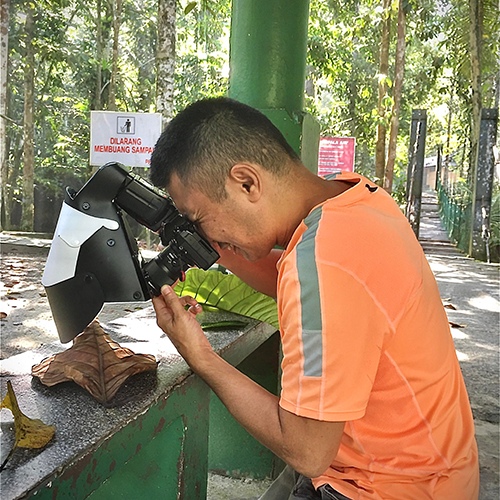Vibrant Insects in Malaysia As Seen Through Pang Way’s Lens
Malaysia, a megadiverse country, harbors the majority of Earth’s species. Tropical rainforests encompass up to 70% of Malaysia’s total land area, of which 11.6% is pristine. (source: Wikipedia)
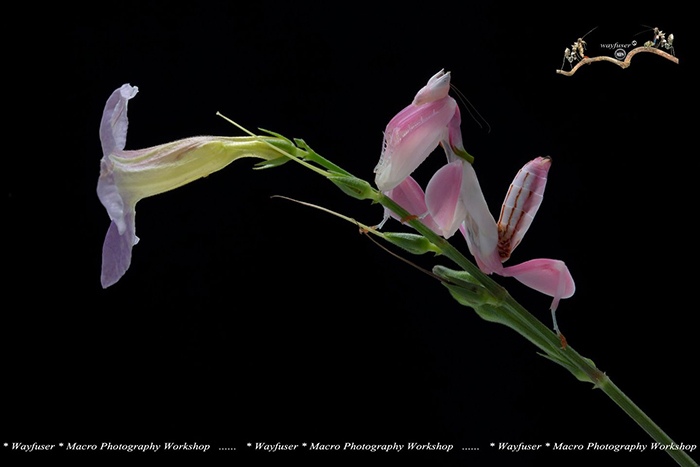
These rainforests support incredible biodiversity. Among them, insects play a vital role in their ecosystems. There are thousands of insect species in Malaysia with new ones being discovered all the time. Given the wide range of entomology in Malaysia, the Orchid mantis stands out as the master of disguise, and the Malaysian shield mantis as a supreme predator. Though insects seem to be everywhere in Malaysia, like other species, they are facing increasing threats from deforestation, pollution, and urbanization just to name a few.
Pang Way, an amateur macro photographer, has done a fantastic job of documenting some of the insects near his hometown, Kuala Lumpur, for almost a decade. We are excited to feature his amazing images that have captivated so many people. At the same time, we would like to take this opportunity of pointing out the dangers these insects are currently facing.
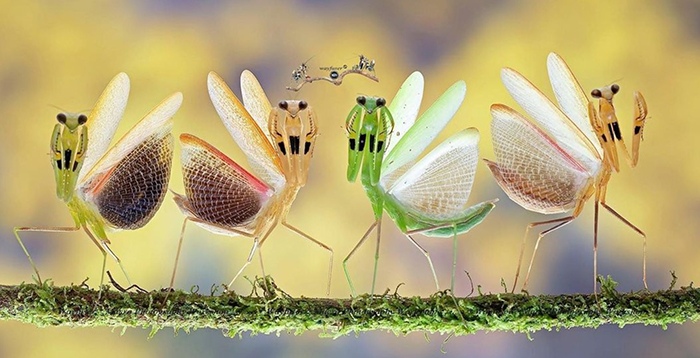
Q: Please tell us about your background and training in taking such vivid photos of insects.
A: My name is Pang Way. I’m 42 years old from Kuala Lumpur, Malaysia.
I started macro photography in 2013. Since then, I have never stopped improving my macro photography and my setup. That is why I always tell people that I still keep learning, hopefully, I can keep getting better, and not stop where I’m now.
Q: Please tell us the region where you have taken most of your images and the characteristics of these insects.
A: I’m so lucky to live in Malaysia because Malaysia is a rainforest country. We can easily find lots of special objects in the forest. Sometimes I will keep some insects that can’t be found in Malaysia but most of my photos are taken in the wild. While taking the shots of bigger objects, I use studio lighting to get special effects.
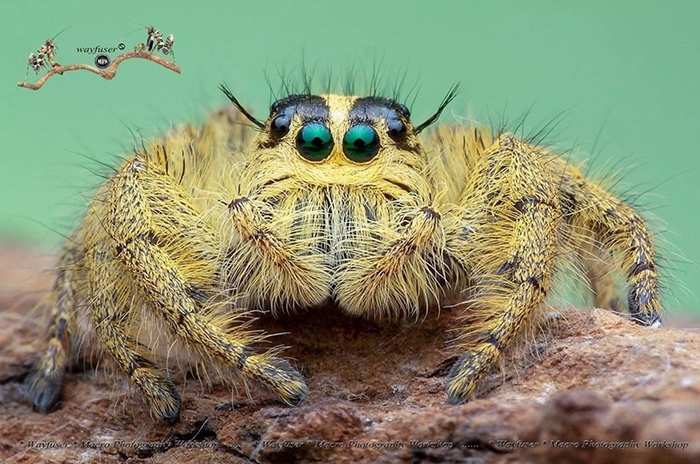
Q: Why are you interested in taking photos of insects and how do you take those images considering that your subjects are quite small?
A: Macro photography is a unique form of photography that involves photographing small objects to make them look life-size or larger in the image which we don’t normally get seen up close with our naked eyes. The most important piece of equipment for macro photography is a macro lens. A macro lens is specially designed to focus up subjects with a 1:1 (life-size) reproduction.
Q: What equipment do you use when taking those photos?
A: My macro photography setup is called *Wayfuser* which is my lighting setup.
With the diffuser (lighting softbox), you can photograph with a very small aperture, like f/16 or f/22. This increases the depth of field slightly, providing enough room to keep an entire small insect in focus. My aim is to shoot and document as many species of insects, bugs, and spiders as possible to improve my knowledge in terms of basic entomology identification and habitat study.
I’m currently using canon 60D , 100mm F/2.8L Lens, raynox dcr250 (depends on subjects) & my DIY diffuser (wayfuser)
Q: Please share with us some of your favorite images and the stories behind them.
A: The following are some of my favorites. I have also provided their descriptions from my research on the internet:
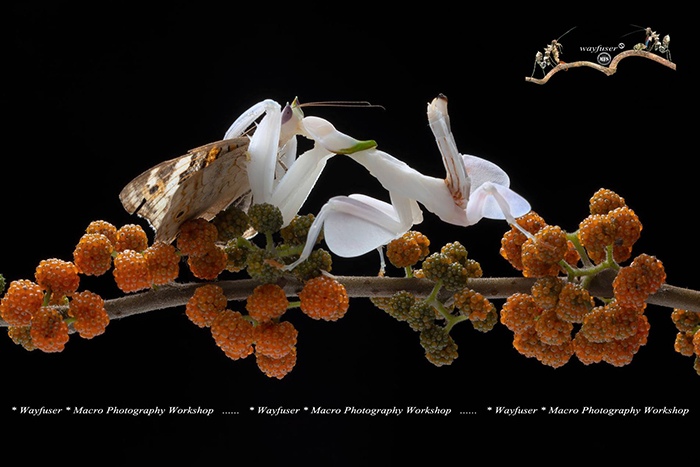
Hymenopus coronatus, aka Orchid Mantis, is a mantis from the tropical forests of Southeast Asia. It is known by various common names including walking flower mantis and (pink) orchid mantis. The mantis can change its color between pink and brown, according to the color of the background. It is one of several species known as flower mantises from their resemblance and behavior.
H. coronatus is found in the rain forests of Southeast Asia, including Malaysia, Myanmar, Thailand, the Philippines, and Indonesia. It is also found in the Western Ghats of India.
H. coronatus shows some of the most pronounced sexual size dimorphisms of any species of mantis; males can be less than half the size of females. The female predatory selection is the likely driving force behind the development of extreme sexual size dimorphism. Prior to the development of its camouflage, the female mantis implements ambush predation to allow it to hunt larger pollinating insects. An example of this ambush predation is the orchid mantis’s ability to ambush foraging butterflies, a fairly large prey, which it captures using its pair of toothed arms and its powerful bite. As the female orchid continues to develop, much of its dramatic increase in size can be attributed to predatory selection and ambush predation.
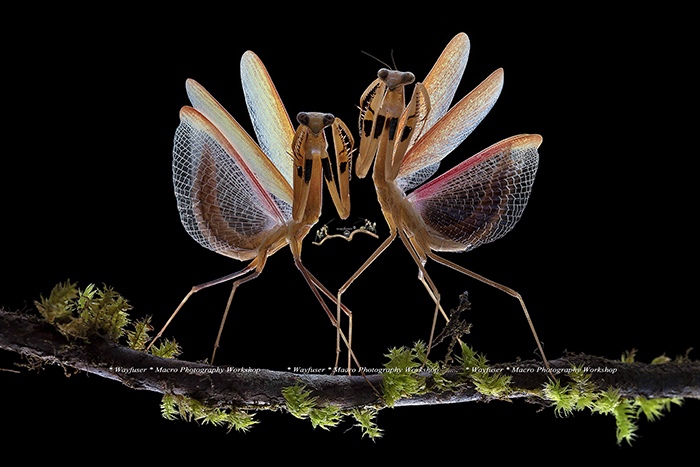
Statilia maculata, aka Asian jumping mantis, is a species of mantis native to Asia that can also be found in China, Japan, and Korea.
Statilia is a genus of praying mantis that resembles dead or living grass. Males: 40-55mm in length as adult Females: 45-58mm in length as an adult.
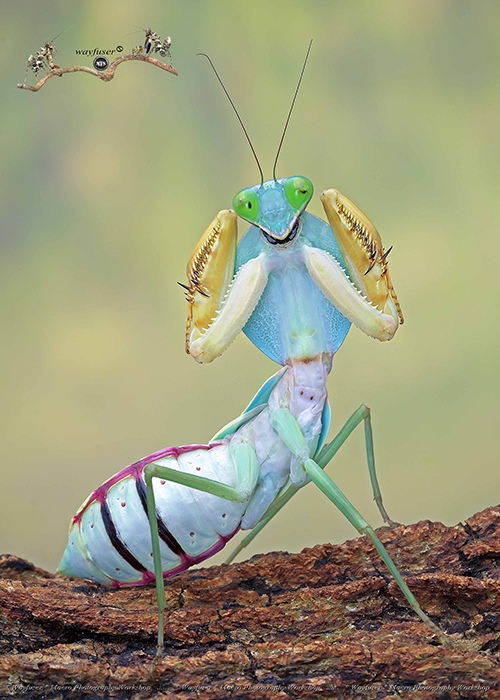
Rhombodera basalis, known as Malaysian shield mantis, is a species of praying mantis of the genus Rhombodera. Its commons name is the giant Malaysian shield mantis. This is one of the most powerful mantis species in East Asia. It can hunt small arthropods like grasshoppers, locusts, cicadas, spiders, and scorpions. Even small mammals like mice, birds, and snakes can be hunted.
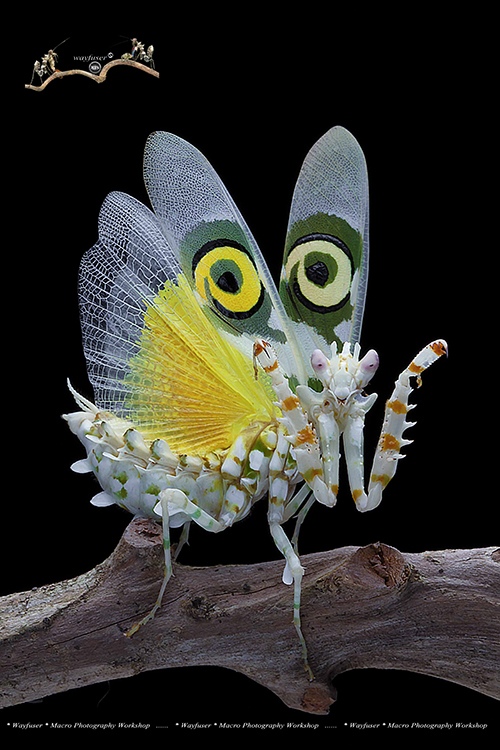
Pseudocreobotra wahlbergii, or the spiny flower mantis, is a small flower mantis native to southern and eastern Africa.
The adult has spiny structures on the underside of its abdomen, giving it its name. It is variable in color, typically light green, but it can equally be tinted yellow, pink, or red. It has a large eyespot on its forewings, which is black, green, and cream, and is surrounded by a green patch. The inner hind wings are orange and the outer hind wings are transparent. Nymphs are black until the third instar.
P. wahlbergii has a dramatic display in which it spreads its forewings, making itself appear larger and prominently displaying its eyespots to startle would-be predators. While at rest it is well camouflaged and is a sufficiently good aggressive mimic of a flower that prey insects can attempt to pollinate it, at which moment the mantis seizes and eats them. They prefer to prey on flying insects and spiders, but if unavailable, will eat virtually any insect.
Q: Do you have any concerns for these insects such as their habitat/environment? If yes, what are they?
A: Excessive deforestation and pollution have affected the insect world in my region. I hope that there will be better environmental protection in the future so that our next generation can see more beautiful environments.
Q: Do you have any projects or exhibitions that you would like to share with our readers?
A: I have a Facebook sharing group called Macro Friendship Sharing (MFS).
Thanks for giving me a chance to share my hobby.
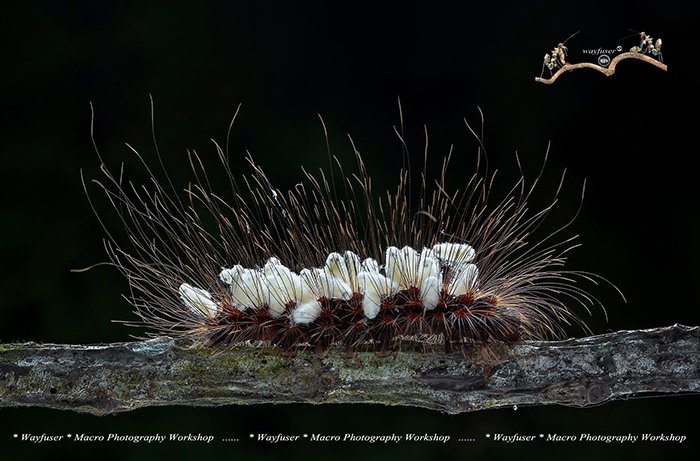
Pang’s insect images definitely opened our eyes and minds to the tropical rainforests and the living creatures inside those jungles. We look forward to more amazing images by Pang in the future.
Pang’s Instagram
